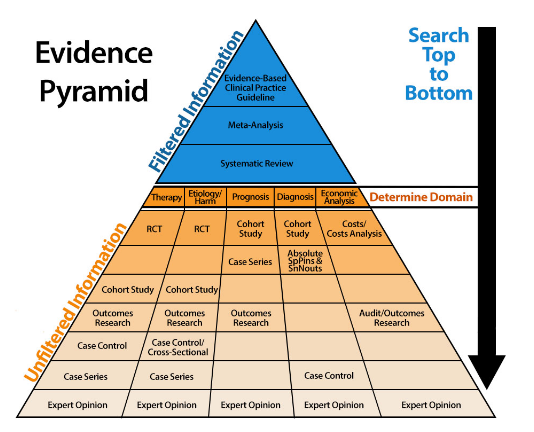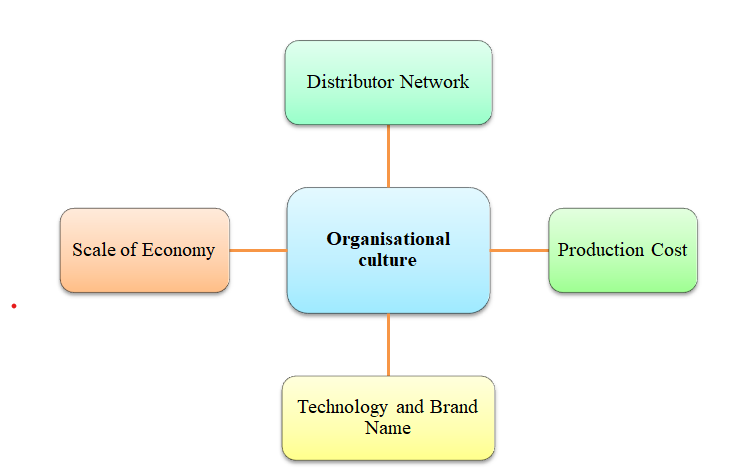7118SOH Assignment Sample Evidence-based Practice and Research Principles 2023
CLINICAL GUIDELINE TITLE:
AAA (American Academy of Audiology) Clinical Guidelines for the Treatment, Diagnosis, and Management of Adults and Children with CAPD (Central Auditory Processing Disorder)
Introduction
The aim of the CPG (clinical practice guideline) was to provide appropriate direction to health providers involved in supporting and caring for children and adults with CAPD. A task force was developed by AAA for creating an effective document for the clinicians engaged with the support and care of children and adults with CAPD.
Most of the members of this task force were researchers or professors of the auditory research committee. Therefore, appropriate experiences and knowledge are utilized to prepare this guideline.
Clinical guideline and Intended audience
Clinical practices guideline in context to CAPD highlight the recommendation based on diagnosis, management and treatment of the children and the adults suffering from Central Auditory processing disorders (CAPD). CAPD is the disorder most commonly observed among wide array of population facing difficulties in processing sounds.
As started by Crawford (2007), degenerative disease, exposure to neurotoxic substances results in occurrence of CAPD among the individuals. The clinical guideline in context to CAPD has been documented for the clinicians highlighting the intervention strategies and clinical approaches that would be suitable to mitigate the issue of CAPD among the individuals.
CAPD is most commonly observed among the children however lack of intensive training in adequate treatment, support highlights the need of CAPD guideline. The intended audience fort the CAPD guideline include not just the clinicians but also physicians, legislators, educators, parents who are to be educated to help them determine the training, instrumentation and time required for early diagnosis.
The framework intends to alter clinical judgements rather it acts as a support system for the clinicians to implement intervention strategies for effective treatment and diagnosis of CAPD.
Clinical guideline: critical analysis
Different case histories of the patients with CAPD were analysed in the guideline by the audiologists. The case histories of the patients provided appropriate information about the auditory functions among different individuals. On the other hand, different kinds of literature were reviewed to select the appropriate testing such as electrophysiologic procedures and behavioural tests for the diagnosis of CAPD.
Additionally, the guideline of case history may help the clinicians to recognize the existence of PCSD (potential comorbid sensory deficits) or any other conditions (Bowling et al. 2014). In order to collect the information of the case history, appropriate interviews can be conducted with the CAPD patients to get the most reliable data. The guideline for the case history data collection was prepared in this guideline through reviewing different pieces of literature.

Figure 1: Evidence hierarchies in clinical practice
(Source: Brennan et al. 2020)
The specific areas stated in the case history guideline and testing guideline were based on the appropriate level of evidence quality. It has been analysed that the evidence level of 2 to 5 was maintained in the guideline (Cochrane Library, 2021). In this way, it has been cleared from level 2 evidence that the evidence for the information obtained from a well-designed RCT (Randomized control trials).
Level 3 indicated that evidence was gathered from quasi-experimental (appropriate controlled trial discarding randomization). Level 4 cleared that some of the evidence was collected in cohort or case-control studies (Dickson & Flynn, 2008). Level 5 indicating that meta-synthesis was done means evidence was collected from a systematic review of qualitative and descriptive studies.
As per the view of (Harvey & Kitson, 2015), clinical trials are important to make any CPG (clinical practice guideline) appropriate and reliable. It has been seen that the evidence quality of AAA guidelines followed the primary generic design tool of AGREE II (Appraisal of Guidelines for Research and Evaluation II).
The guideline followed the methodology of evidence selecting criteria, relevance and strength of AGREE II (Joanna Briggs, 2021). As a systematic approach is followed in this AAA guideline, it can be stated that it is aligned with AGREE II provisions. Direct observation of the patients within natural setting can help clinicians further obtain answer to the questions that can help in better diagnostic evaluation.
Practical implications and applications
The clinical guideline in context to CAPD has prioritised the areas of patients’ history, diagnosis, intervention procedures and professional issues for instance education and training in context to CAPD. The AAA guideline was particularly made for the US but it can be adapted in other countries also. As appropriate evidence was used in this guideline it can be used for the treatment and diagnosis of CAPD (Newell & Burnard, 2011).
Case history of the CAPD patients help audiologist obtain crucial information about the individual’s auditory information, likelihood of CANS compromise that helps physician rely upon the reliable electrophysiological procedures for better diagnosis and evaluation of CAPD.

Practical application of this guideline can be done efficiently and appropriately if the case history of the patients is selected by the clinicians without any errors. On the other hand, appropriate testing is also required for the specific diagnosis (Duke, 2020). Case history information of the patients are usually obtained through conduction of interview of the patients, reviewing of clinical records to clearly elucidate the problems being encountered by the patients.
On the other hand, social development, cultural background, and current therapy of the patients must be collected as per evidence levels 4 and 5. In order to gather information on the case history appropriate clinical interviews should be conducted that are effective to build trust among the patients and clinicians (Nursing Center, 2017).
Ancillary information through observation is effective to select the appropriate diagnostic test for the patient (Crawford, 2007). Direct observation mentioned in this guideline is effective to gain the required information about the difficulties and behaviour of the patients.
In this way, neurologic compromise including gait problems, abnormal eye movements, and facial paralysis can be easily detected (Brennan et al. 2020). Although, direct observation mentioned in this guideline is not more realistic.
The guideline for patient selection must be based on the appropriate observational study including age, cognition, attention, motivation, linguistic background, and memory (National Institute for Health and Care Excellence, 2021). These observations can enable clinicians to select the appropriate diagnosis and testing method for the patient.
The testing method of CAPD is different for different aged people and therefore the guideline related to age considerations is appropriate for CAPD diagnostics. As stated by Crawford (2007), cognitive status and age have an influence on the auditory functions of individuals. Therefore, AAA guidelines related to cognitive abilities are appropriate for the assessment of central auditory.
This guideline has also shed light on the screening measures and other testing procedures which are effective to detect auditory difficulties among different individuals (Centre for Evidence-Based Medicine, 2021). Recommendation in context to CAPD treatment further highlight that treatment of the individuals should be undertaken as soon as possible after the CAPD diagnosis among the patients.
Furthermore, application of the intervention procedures within the clinical healthcare setting further reveals customizing therapy for instance top-down, bottom-up approaches serve to be complementary and are to be incorporated within the healthcare settings for maximizing treatment effectiveness.
Conclusion
The recommendations that have been highlighted in AAA guidelines include close skill monitoring by the clinicians for performing the diagnosis at the early stage. The testing of this guideline should be followed to identify the abnormalities and describe the nature of the disorder among the patients.
Appropriate epidemiologic studies and biostatistical treatments methods have been discussed in this guideline. It has also been highlighted that the patients must be educated about their disorder and the clinicians need to maintain the professional competence level.
Reference list
Books
Bowling, A. (2014). Research methods in health: investigating health and health services. UK: McGraw-hill education.
Dickson, G. L., & Flynn, L. (Eds.). (2008). Nursing policy research: Turning evidence-based research into health policy. US: Springer Publishing Company.
Harvey, G., & Kitson, A. (2015). Implementing evidence-based practice in healthcare: a facilitation guide. UK: Routledge.
Newell, R., & Burnard, P. (2011). The research process–organizing your research. Research for Evidence-Based Practice in Healthcare, Hoboken, John Wiley and Sons. US: Springer Publishing Company.
Online journals
Brennan, M. L., Arlt, S. P., Belshaw, Z., Buckley, L., Corah, L., Doit, H., … & White, C. (2020). Critically appraised topics (CATs) in veterinary medicine: applying evidence in clinical practice. Frontiers in Veterinary Science, 7(11), 314. Retrieved from: https://www.frontiersin.org/articles/10.3389/fvets.2020.00314/full [Retrieved on: 5th October 2021]
Crawford, J. M. (2007). Original research in pathology: judgment, or evidence-based medicine?. Laboratory investigation, 87(2), 104-114. (Online). Retrieved from: https://www.nature.com/articles/3700511 [Retrieved on: 5th October 2021]
Websites
Centre for Evidence-Based Medicine (2021). Centre for Evidence-Based Medicine. Retrieved from: http://www.cebm.net/ [Retrieved on: 5th October 2021]
Cochrane library (2021). Cochrane Library. Retrieved from: https://www.cochranelibrary.com/ [Retrieved on: 5th October 2021]
Duke (2020). Duke University – Resources for Evidence-Based Practice. Retrieved from: http://guides.mclibrary.duke.edu/nursing/ebp [Retrieved on: 5th October 2021]
Joanna Briggs (2021). University of Adelaide – Joanna Briggs Institute. Retrieved from: https://joannabriggs.org/ebp [Retrieved on: 5th October 2021]
National Institute for Health and Care Excellence (2021). National Institute for Health and Care Excellence. Retrieved from: https://www.nice.org.uk/ [Retrieved on: 5th October 2021]
Nursing Center (2017). Evidence-Based Practice Network. Retrieved from: http://www.nursingcenter.com/evidencebasedpracticenetwork/home [Retrieved on: 5th October 2021]
Know more about UniqueSubmission’s other writing services:

